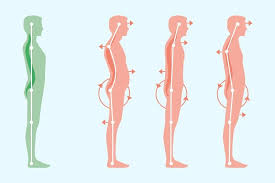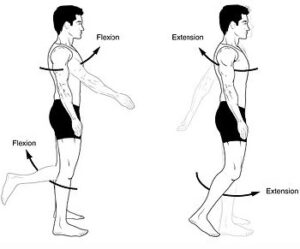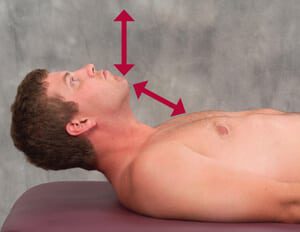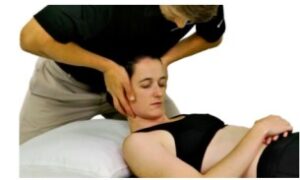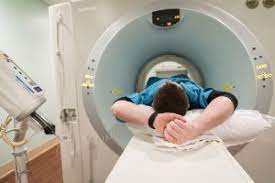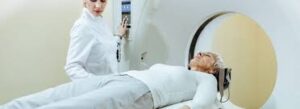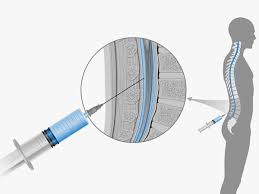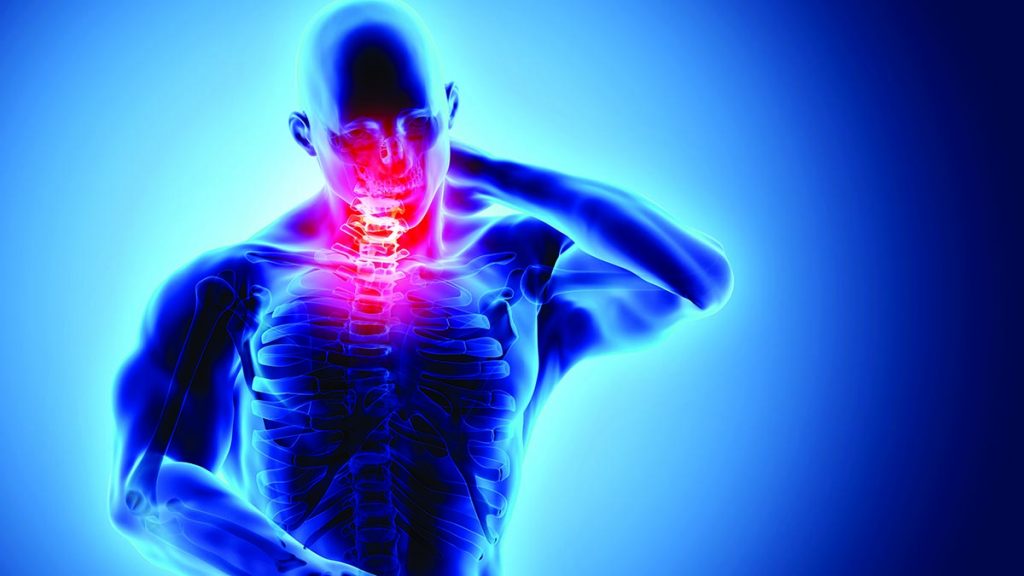

If you want to learn the top 8 tests for detecting forward neck posture, then, you have got to read this article carefully.
Also known as poor habitual neck posture, this is a condition wherein your head tends to slide forward.
When you have bad neck posture, your head tends to stay ahead of your body’s natural center of gravity. Simply put, your head is a few inches ahead of your cervical spine. This tilt initiates from the C4 vertebrae extending all the way till the Axis.
In most cases, bad neck posture is owing to poor lifestyle choices. It could be caused by you working on the desktop for hours. Crane neck posture is also a resultant of you watching your cellphone for long hours.
There could be several more reasons for your nerd neck. Perhaps it is genetic bone structure that is to be blamed. It could also be owing to an illness or an accident.
Whatever the case may be, you need to first learn how to diagnose your forward head posture.
Let me (BestForwardHeadPostureFix research staff) walk you through a few tests for the same:
What are the Top 8 Tests for Detecting Forward Neck Posture – Article Contents:
1) Standing Ruler Test
2) Complete Range of Motion Test
3) Testing the Neck Flexors
4) Testing the Neck while Lying Down
5) CT Scan
6) MRI Scan
7) EMG Test
8) FAQs on Detecting Forward Neck at Home
9) Myelogram
The Standing Ruler Test
This is perhaps the simplest forward neck posture test that can be done at home. You need to stand straight with your back towards the wall. You need to ensure that your feet are positioned shoulder width apart.
Your butt as well as your shoulders should be pressed against the wall in a natural way. You should not try and put a lot of effort while doing so. It should be a smooth and natural movement.
Ask your friend to measure the distance between the wall and the back of your head. If there is no distance and your head touches the wall then, you have perfect head posture.
Nonetheless, if the back of your head does not touch the wall and slides forward then, you suffer from forward neck.
Complete Range of Motion Test
The second test involves assessing the complete range of motion of your neck. Here, you are asked by the doctor to flex, extend and rotate your neck. You are also asked to laterally flex your neck.
Here are a few points to consider:
@ Ideal flex angle of the spine is 50 degrees.
@ The ideal lateral flex angle of the spine is 45 degrees.
@ An ideal extension angle of the spine is 60 degrees.
@ The rotation of the spine should be 90 degrees.
If there is any deviation from these figures then, it is highly likely that you suffer from forward neck posture.
Please Note: Bad neck posture indicates reduced cervical range of motion.
Head Posture Test while Lying Down
The head posture test while lying down is a simple yet effective assessment used by medical practitioners to evaluate forward head posture and spinal alignment.
This test helps determine whether the head and neck maintain a neutral position or if there is a misalignment that could indicate postural issues.
Here is a step-by-step breakdown of how this test is conducted:
Lying in a Supine Position – The patient is asked to lie down flat on a firm surface, such as an examination table or bed, with their arms relaxed at their sides. This supine position allows for a natural assessment of spinal alignment without any external influences.
Observing Neutral Posture – In individuals with good posture, the spine, neck, and head remain in a neutral position. The back of the head, shoulders, and lower back should all rest comfortably on the surface without strain.
Detecting Forward Head Posture – If forward head posture is present, the neck and head will be hyperextended. The chin will tilt upward due to increased cervical curvature, and the thoracic spine may appear rigid and slightly arched.
Assessing Thoracic Rigidity – A stiff thoracic spine often accompanies forward head posture, preventing the upper back from lying flat. This misalignment can cause muscle tension, headaches, and chronic neck pain if not addressed.
This test is a valuable tool for diagnosing postural imbalances and guiding corrective interventions such as physical therapy, posture correction exercises, or chiropractic adjustments to fix text neck.
Neck Flexor Assessment Test
In this test, you need to lie down supine onto a flat bench with your hands clasping the back of your head. Lift your head an inch upwards with the help of your hands.
You need to then tuck your chin, so as to achieve a neutral position. Thereafter, you can let go of the support and allow your head to remain an inch above the flat table.
If your head posture is normal then, you should be able to maintain this position around 30 to 50 seconds.
In case you suffer from bad neck posture then, you may not be able to sustain this position for even 25 seconds.
This is yet another test for determining your neck and head posture.
The CT Scan Test:
The next test that I recommend for assessing the condition of your cervical spine is a computed tomography (CT) scan.
This advanced imaging technique provides a detailed, cross-sectional view of the spine, making it a highly effective tool for diagnosing various spinal conditions.
Unlike standard X-rays, which provide only two-dimensional images, a CT scan dissects images into miniature slices, allowing doctors to view the spinal canal in its entirety.
This enables a more precise evaluation of the alignment, spacing, and overall health of the cervical spine.
CT scans are primarily used to detect bone tumors, bone spurs, infections, fractures, or osteophytes, all of which can contribute to spinal discomfort and postural misalignment.
However, a CT scan is also valuable in assessing the angle of forward head posture, a common issue caused by prolonged poor posture, excessive screen use, or muscle imbalances.
Identifying the degree of forward head posture through a CT scan allows for targeted treatment, such as physical therapy, chiropractic care, or posture correction exercises (such as stretching the upper back to fix text neck), ultimately preventing further spinal deterioration and chronic pain.
The MRI Scan
The next test on the list is an advanced version of the CT scan, known as Magnetic Resonance Imaging (MRI).
Unlike X-rays or CT scans, which primarily assess bone structures, an MRI provides highly detailed images of both soft tissues and bones.
This makes it particularly useful for evaluating spinal conditions beyond just forward head posture.
Here is a step-by-step breakdown of how this test is conducted:
Use of Magnetic Fields and Radio Waves – The patient is placed inside an MRI scanner, a large tube-like machine that uses strong magnetic fields and radio waves to generate detailed cross-sectional images of the spine. Unlike CT scans, an MRI does not use ionizing radiation, making it a safer option for repeated imaging if necessary.
Computerized Image Processing – The MRI machine captures high-resolution images, which are then processed and displayed on a computer screen. These images allow specialists to examine the spinal column from different angles, providing a comprehensive view of the cervical spine.
Visualization of Nerves and Soft Tissues – One of the most significant advantages of MRI is its ability to clearly display nerves, spinal discs, ligaments, and other soft tissues. This is crucial for identifying nerve compression, which can contribute to postural misalignments.
Detection of Additional Spinal Issues – In addition to forward head posture, an MRI helps detect conditions such as herniated discs, infections, spinal tumors, and inflammation that may not be visible on X-rays or CT scans.
By providing a complete and detailed assessment, an MRI plays a crucial role in diagnosing spinal abnormalities and guiding appropriate treatment plans.
EMG Test
The next test that I have in mind is termed an electromyogram (EMG). This diagnostic procedure evaluates the function of muscles and nerves in the spinal column by measuring electrical activity in response to nerve stimulation.
An EMG is particularly useful for detecting neuromuscular disorders and assessing nerve compression, a common issue in conditions such as cervical radiculopathy, herniated discs, or spinal stenosis.
Research published in the Journal of Clinical Neurophysiology suggests that EMG testing is highly effective in identifying nerve dysfunction before structural abnormalities become visible on imaging tests.
This test not only detects nerve damage but also provides insights into the condition of muscles. If a nerve is compressed, it can cause muscle weakness, tingling, or numbness, which an EMG can accurately diagnose.
Additionally, an EMG can help determine the true posture you are maintaining, revealing muscular imbalances contributing to poor spinal alignment.
It is often recommended for individuals experiencing unexplained pain, muscle weakness, or posture-related issues, helping guide targeted treatment such as physical therapy, chiropractic care, or corrective exercises for better spinal health.
Myelogram
The last and final test on the list is the myelogram, a specialized diagnostic procedure that provides a synchronized analysis of the spinal discs and vertebrae.
This test is primarily used to detect nerve root damage, spinal tumors, and compression issues that may contribute to symptoms such as numbness, weakness, and stiffness in the neck and head muscles.
While it may not be the best test for directly measuring forward head posture, it can provide valuable insights into the underlying spinal conditions affecting posture.
Below is a step-by-step breakdown of how this test is conducted:
Injection of Contrast Dye – A special contrast dye is injected into the spinal canal through a lumbar puncture (spinal tap). This dye enhances the visibility of the spinal cord, nerve roots, and surrounding structures on imaging scans.
Real-Time X-Ray Imaging (Fluoroscopy) – After the dye is injected, the patient undergoes fluoroscopy, a real-time X-ray imaging process that tracks how the dye moves through the spinal column. This helps doctors identify abnormalities, such as nerve compression or structural misalignments.
CT Scan for Detailed Visualization – Following fluoroscopy, a CT scan is performed to capture detailed cross-sectional images of the spine. This step allows for a more precise evaluation of the discs, vertebrae, and nerve pathways.
Assessment of Symptoms and Structural Issues – The test helps determine whether forward head posture is linked to neurological symptoms like numbness, muscle weakness, or chronic stiffness. It also reveals conditions like herniated discs, spinal stenosis, or degenerative changes affecting posture.
Though not the primary test for diagnosing bad neck posture, a myelogram is valuable in detecting serious spinal conditions (such as a pinched nerve leading to text neck) that may contribute to postural imbalances and chronic discomfort.
FAQs on Detecting Forward Neck at Home
Q-1: What is the Craniovertebral Angle (CVA) measurement, and how does it assess forward neck posture?
A-1: The Craniovertebral Angle (CVA) is the angle formed between a horizontal line through the C7 vertebra and a line connecting the C7 vertebra to the external auditory meatus. A smaller CVA indicates a more pronounced forward head posture.
Q-2: How does the Neck Flexion Rotation Test (NEFERT) help in diagnosing forward neck posture?
A-2: The Neck Flexion Rotation Test (NEFERT) evaluates the range of motion and flexibility of the cervical spine. Limited rotation during flexion may indicate tightness associated with forward head posture.
Q-3: What role does the Spurling’s Test play in detecting forward neck posture?
A-3: Spurling’s Test involves extending and rotating the neck to the affected side while applying downward pressure. A positive result, indicated by radiating pain, can suggest nerve root compression linked to forward head posture.
Q-4: How does the Wall Test assist in identifying forward neck posture?
A-4: In the Wall Test, a person stands with their back against a wall, ensuring their heels, buttocks, and upper back are in contact. If the back of the head doesn’t touch the wall without tilting the head back, it suggests a forward head posture.
Q-5: What is the role of radiographic imaging in assessing forward neck posture?
A-5: Radiographic imaging, such as lateral cervical spine X-rays, can measure the cervical angle and other parameters to objectively assess the degree of forward head posture.
These tests, among others, are utilized by healthcare professionals to evaluate and diagnose forward neck posture, aiding in the development of appropriate treatment plans.
Conclusion:
The first and the second test that I have mentioned are appropriate to measure your forward head posture. The Ruler Method is the simplest and would give you a fair idea on your current neck position.
Nonetheless, if your bad neck posture is backed by neck pain, muscle stiffness and other issues in the spinal column then, you might need to go in for the remaining tests.
The best and easiest way to avoid forward head posture is to try and maintain good neck posture at all times.
References:
